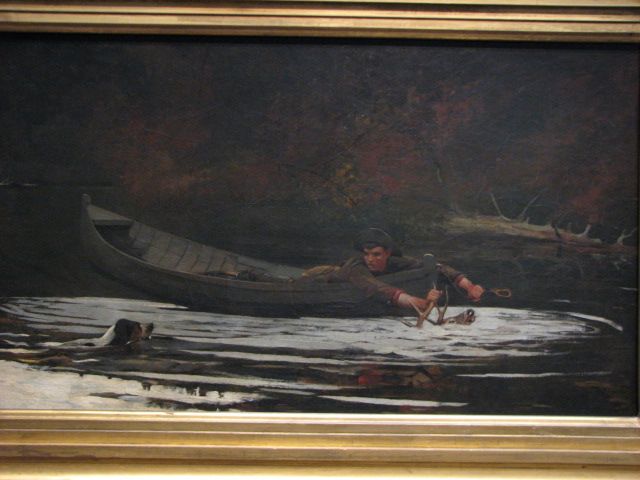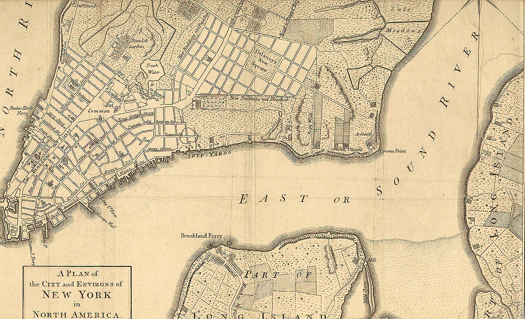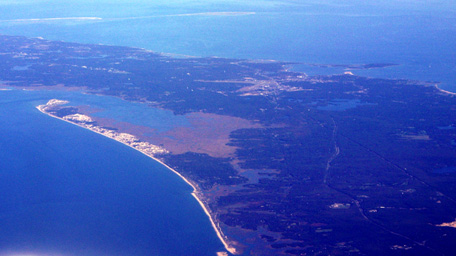![]()
Widespread changes in landscape by coastal engineering
settlement required new means to accommodate a quickly growing population.
slave labor and
steam engine
both created literally new land and redirected waters of the early American nation.
What is reclamation?, see definition.
34
ideology of agrarianism
pace of reclamation versus artists and writers who stopped
to look
positive returns form reclamation
35
naturalists most important bequest was to catalog what is now
going, gone
Du Pont "the face of the country is changed"
shift in how estuaries and marshes were used
Utilitarianism
36
Oliver Evans an inventive genius in Philadelphia
36-37
Schuylkill river dredge
Health and sanitation
Evan's invention for steam dredging
Steam dredges -- pumping and
vessel safety
navigational vigilance
37
five million population to 32 million in _____ years;
5
10 is double
20 is quadruple
32
Urban growth
Agrarianism and Jeffersonian democracy
Jeffersonian idealism and the
land ordinance of 1785
Articles of Confederation --
public domain -Compromise of 1785
Encouraging settlement,
Hamiltonian sale of public domain
38
Establishment of the Public Domain
Policies promoted the sale of public lands to acquire revenue to fund government.
Tidelands more complex than the land survey system because these are submerged lands and exposed areas depending on the time of the year and the extremity of the tides.
submerged land
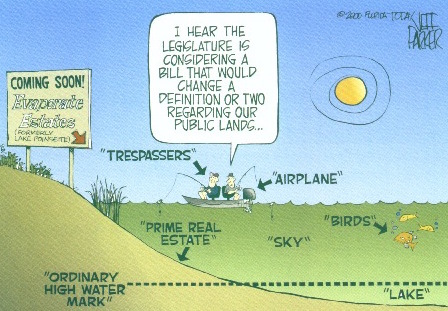
Jefferson's varied ideas include opposition to
fishery subsidies in favor of markets and tariffs.
39
fishery declines
1807, Survey of Coasts was in
the Lewis and Clark tradition
1815 -- during the war
of 1812-1814; lessons were learned -- it USCS began only to die 1818
1832, Coast Survey was revived
40
Albert Gallatin, Secretary of the Treasury under Jefferson, had a vision of an interconnected "network" for a coastal nation.
Report on the Internal Improvements needed to create the commercial viability of the nation.
conversion of tidal basins due to commerce
Boston tripled in
population--1789-1824
41
Boston constructing the Long Wharf and mill
pond
Back Bay fill 1844
Railroads and filling south
Cove1861
42
carts of rubbish and scavengers
regular steamer service on rivers brought people to the mountains and the seashores.
Jacksonian era and the start of swimming recreationally and
summer

43
Profound appreciation for the
seashoreĞis evident at Nahant, north of Boston.
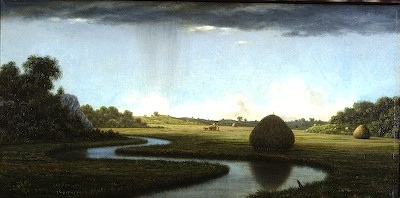
even marshes were pretty for this visitor of the seashore
44
reclamation | urbanization | agrarianism | Boston | Romantic movement | Erie canal | early ecology | advocates
The romantic poets and writers developed a preoccupation with nature
"unspoiled"
John Bartram &
Cadwallader Colden
the natural history of the Americas: the geology, botany and zoological portrait of the place.
1765-Florida and the Carolina
45
wild areas were sanctuaries -- Bartram sees the wilds of Florida as a garden and Adam Seybert saw the northern marshes as a balancing landscape, necessary for creation to function as God intended.
Bartam's extraordinary insights:
timeless scenic qualities
earth to man at creation
unfinished landscapes in need of improved reclamation
46
Contrasting sentiments
created ambivalence
frightened by the ocean
John Singleton Copley
"pestiferous wetlands"
Washington Allston and
Winslow Homer -- conflicting moods
Thomas Cole: Mt Desert
47
Cole and a companion visited Maine's coast to paint and capture the ambiance of the place.

Martin Johnson Heade's luminists revealing the
play of light and dark
Winslow Homer
Emerson "nature a wild
delight," Essay on Nature
Melville "Water
and meditation are wedded."
George Gordon Lord Byron, romantic poet
48
Byron's Childe HaroldÕs Pilgrimage
Sea's picturesque beauty
Astor and the Critics of
industry Washington Irving -- literature of place
Irony of Astor's wealth --
9/11 site actually
49
Materialist view of the developing nation
50
Erie Canal tied two watersheds together:
- The Hudson River to
- The Great Lakes
Mitchell 1801-1813 The Congressional
Dictionary
formative period under-financed and ridiculed
science and protection were partners
Heath Hen protection and preserving the varied fishes of New York
51
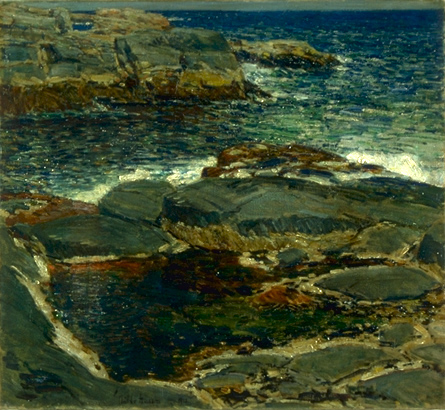
Childe Hassam, Rocks at Mt. Desert Island.
The roots of ecological thinking
John James Audubon
Birds
Florida and LA - Newfoundland
52
Audubon and Bartram
shooting alligator's
observant naturalists and birds painted in native settings
53
tropical shoreline vegetation
biological understanding of the estuarine fringe
literature and lore
naturalists part of an ambivalent heritageĞa two-sided way of approaching preservation.
Two pioneers of ecological concepts:
Edmund Ruffin on the North Carolina outer banks
Henry David Thoreau about Massachusetts, Cape Cod
54
Ruffin
Pioneering species,
succession and soil improvement
loblolly pine forests and soil creation
high salinity and oyster reefs
rice spread with malaria
55
Ruffin as critic of improvements
removal of water affected flood plains downstream
laissez-faire behavior questioned!
Ruffin's depiction for a
dredge "tearing" at the land
56
Thoreau and Cape Cod, 1849
Plains of Nauset
Superstitions as to fish
declines
Indians and land as palimpsest
we erase at our ignorance
Force of the ocean in shaping
the landscape
57
Cape Cod was home to timber, sands, marshes and fisheries
Thoreau had both a
Mystical reverence and scientific
eye zonation vegetative
association
Poor shad --
"Who hears the fishes when they cry?"
58
Henry David Thoreau tied to Adam Seybert
Philosophical idealism,
transcendentalism and descriptive nature study
Recreation and relax growth
of with urbanism
Origins of coastal
conservation
Growing sentiment expressed
in Marshes of Glynn
59
Poem explained in terms of the
salt grasslands
Peaceful contemplative place poems
stanzas -- liberal marshes of Glynn
reveal the "Greatness of God"
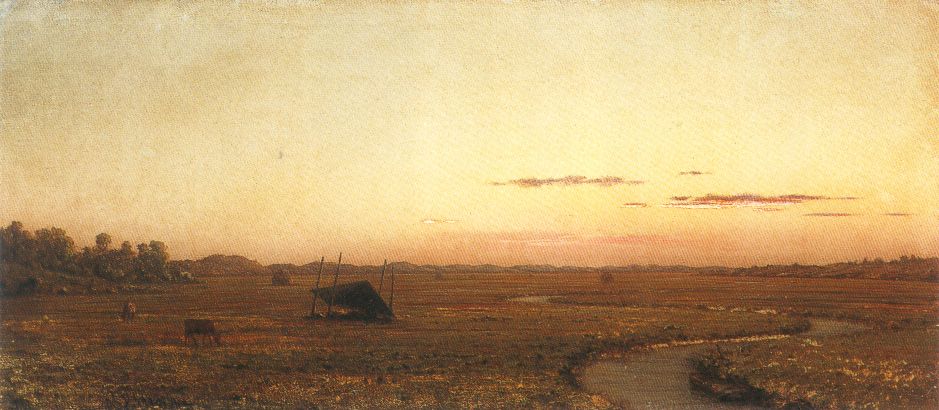
Martin Johnson Heade, "Winding RIver." 1863 Oil on Canvas, American.
Heade and Bryant "the picturesque"
These naturalists, painters, and writers created the intellectual basis for
society's later defense of wildlife, fisheries, & coastal preservation
61
![]()

